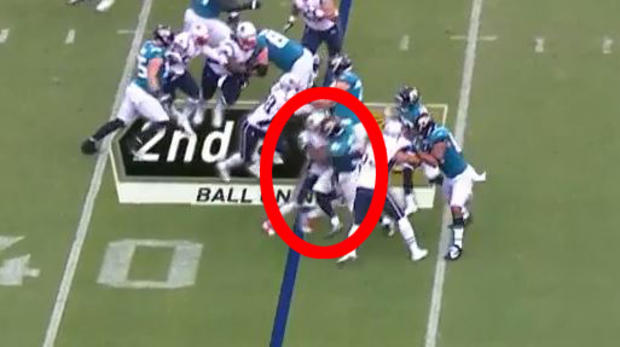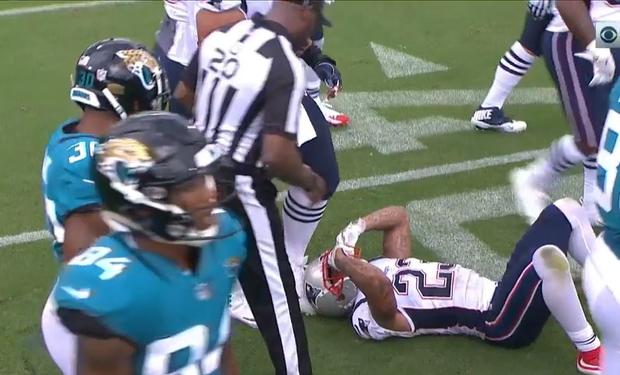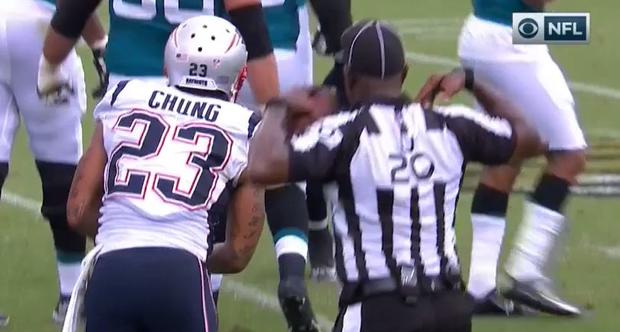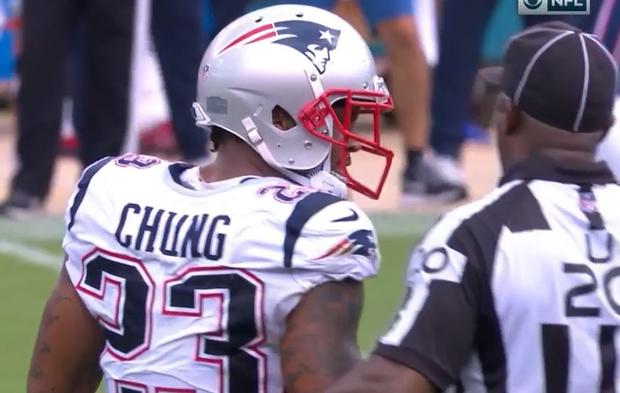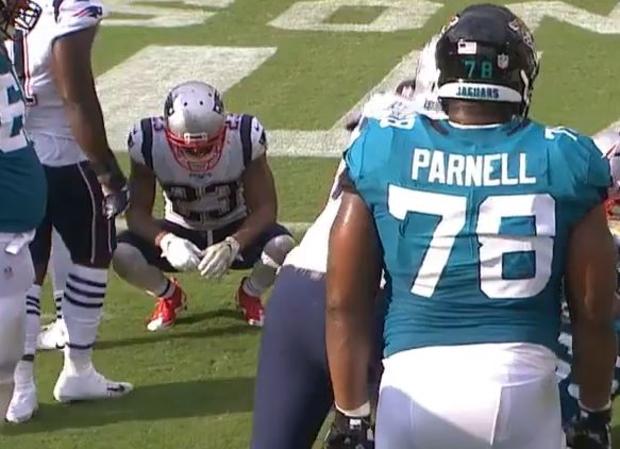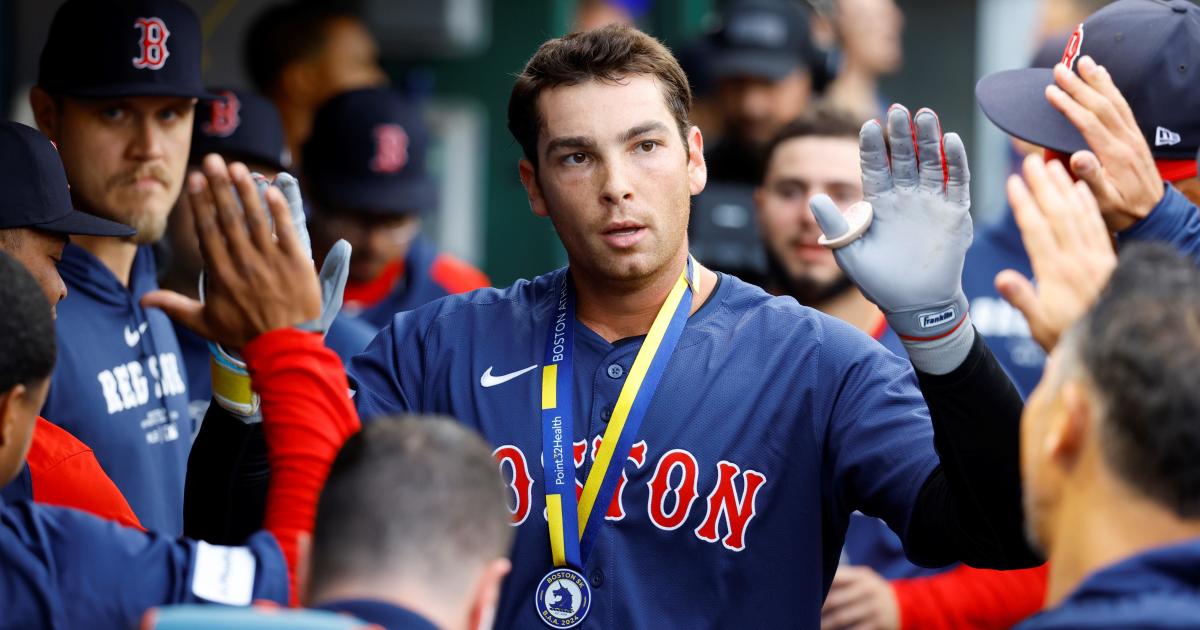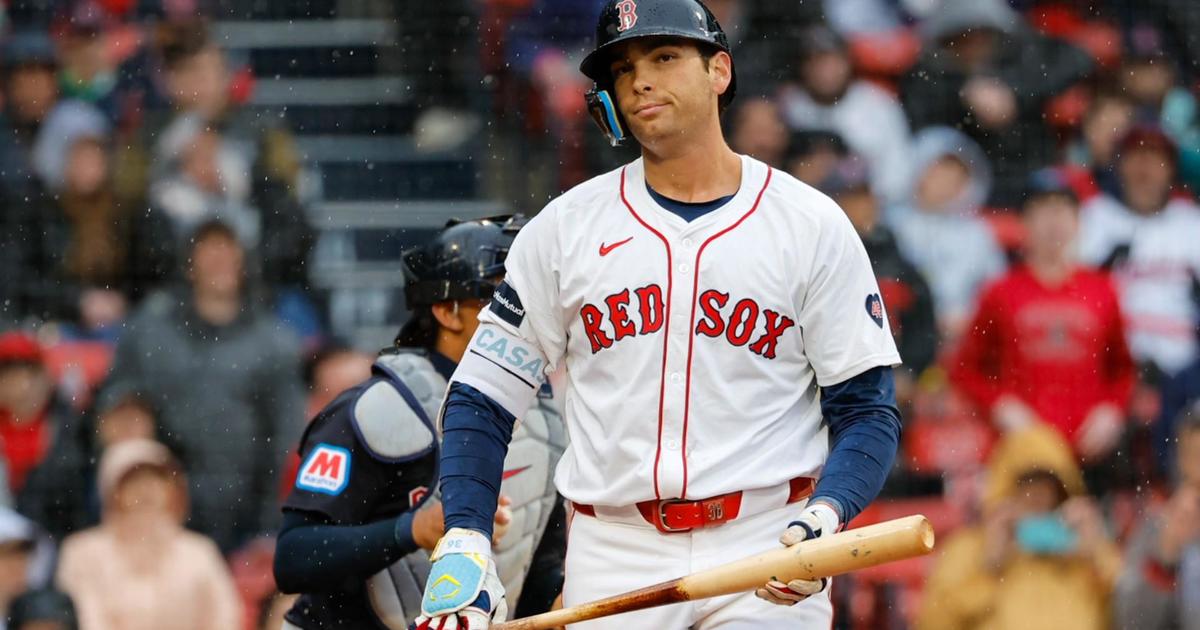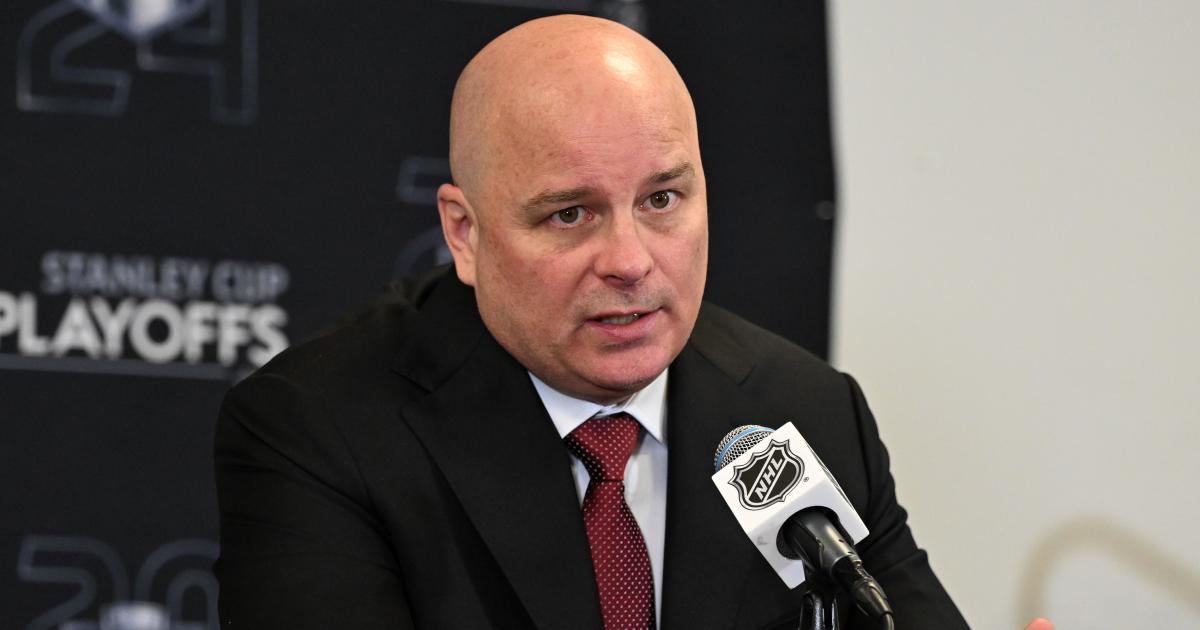Handling Of Patrick Chung's Concussion An Alarming Look At Protocol Breakdown
By Michael Hurley, CBS Boston
BOSTON (CBS) -- Limiting the frequency and severity of concussions in football can be a very difficult thing to do. That is an issue that appeared to be very much on display with Patriots safety Patrick Chung on Sunday afternoon in Jacksonville.
Chung suffered a concussion during the first half of Sunday's loss to the Jaguars, but he remained in the game until halftime. He did not return to the Patriots' sideline after the half, and the team announced it was due to a concussion.
A review of the game film shows a potential major breakdown in the NFL's in-game concussion protocol.
The play where Chung appeared to suffer the injury came 12:53 remaining in the second quarter. On a handoff to the left side, Chung collided at full speed with Jaguars tight end Niles Paul, who was working as a fullback on the play as a lead blocker. The two initiated helmet-to-helmet contact with each other (a play that looks like it would have qualified as a penalty under the NFL's "new helmet rule," which has not been enforced in the regular season like it was in the preseason):
As players picked themselves up off the turf, Chung remained down -- clearly dazed. Umpire Barry Anderson stood over Chung, assessed that the player was injured, blew his whistle and called for an injury timeout.
Anderson then clearly and demonstrably pointed to the sideline, indicating that Chung needed to spend at least one play off the field.
Chung said something to Anderson -- perhaps telling the official that he did not believe he was injured and therefore should be able to remain in the game -- but Anderson once again pointed to the sideline.
But Anderson did not necessarily communicate that he had called the medical timeout for a head injury. So, upon arrival at the sideline, Chung received a brief check-in from Patriots medical director Mark Price, an exchange that lasted no longer than 2 seconds and ended with Price patting Chung on the shoulder pads.
Chung sat out for the next play, on which the Jaguars were penalized. Chung was back on the field for the next snap, helping to pursue Donte Moncrief and force the receiver out of bounds to force a Jacksonville punt.
The returner for that punt was Patrick Chung, though he let the short punt fly over his head.
The Patriots then put together a 16-play, 83-yard field goal drive that took 8:20 off the clock and gave Chung an extended rest on the sideline. Chung was on the field for the Patriots' kickoff, which went for a touchback, and he was likewise on the field for the ensuing Jaguars drive. He forced T.J. Yeldon out of bounds on the first play of the drive, and he blitzed off the right side of the line on the next three plays.
Chung was on the field for the next seven plays as well, dropping into coverage six times and blitzing once more. He absorbed no noticeable contact on any of those plays, but after watching his teammates tackle Yeldon inside the 5-yard line, Chung dropped into a squat and appeared to be slightly out of sorts.
Chung remained on the field, prepared to take the next snap, but Jacksonville called a timeout. Chung remained on the field during that timeout, and took the next snap, which was an incompletion. The Patriots then called a timeout. On the next play, Chung was trailing in coverage as Austin Seferian-Jenkins caught a wide-open touchdown in the back corner of the end zone.
Chung was picked on the play by receiver Dede Westbrook, which can help explain how Seferian-Jenkins got so open. But that would also be Chung's final play of the afternoon.
Overall, the situation painted a troublesome picture for the league's protocols that were put in place to presumably protect players from themselves. Many players won't often take themselves off the field, particularly for an injury like a concussion -- one that's not as clear-cut as, say, a broken arm or a torn hamstring. That's especially going to be the case with a player like Chung, who said in February that he avoids the training staff "as much as possible" and that he abides by the motto, "If you can run, then you can play."
Clearly, the on-field official recognized that Chung was not OK, and he therefore sent Chung to the sideline. But there, Chung should have undergone a concussion assessment. Whether it was due to a lack of communication from the officiating crew to the Patriots' sideline or something else, that assessment never came. Instead, Chung stepped right back onto the field, taking 14 more snaps, thereby exposing himself to the risk of more head contact and potentially more serious problems.
The medical timeout is supposed to work by having either a trainer, coach, physician, teammate, concussion spotter, or (in this case) an on-field official raise concerns about a potential concussion. The player then "must be immediately removed to the sideline or stabilized on the field, as needed, and must undergo the entire NFL Sideline Concussion Assessment," which is a six-step process. The medical staff must then conclude if a player has suffered a concussion. If he has, he must be removed from the game. But if the medical staff determines there was no concussion, then the player is free to return.
Based on the fact that Chung did not emerge from the locker room after halftime, it feels safe to believe he would not have passed his test on the sideline, which therefore would have prevented him from taking 14 snaps after suffering the injury.
It wasn't quite as dire as what has played out in recent years with Tom Savage or Case Keenum, but it was nevertheless striking for something seemingly so obvious to get overlooked by so many people who are theoretically responsible for preventing such situations from taking place.
Of course, when it comes to concussions, one can never specifically pinpoint exactly when an injury occurred -- certainly not just from watching on TV. But considering Chung did not engage in any more contact after the play in question that sent him to the sideline, it seems fair to surmise that Chung played almost the entirety of the second quarter while dealing with a concussion and without having received proper attention or treatment on the sideline. It wasn't until halftime that Chung's situation was addressed.
That is, quite obviously, an issue, one that exposes the imperfections of a seemingly well-meaning mechanism aimed at protecting players from head injury.
You can email Michael Hurley or find him on Twitter @michaelFhurley.

